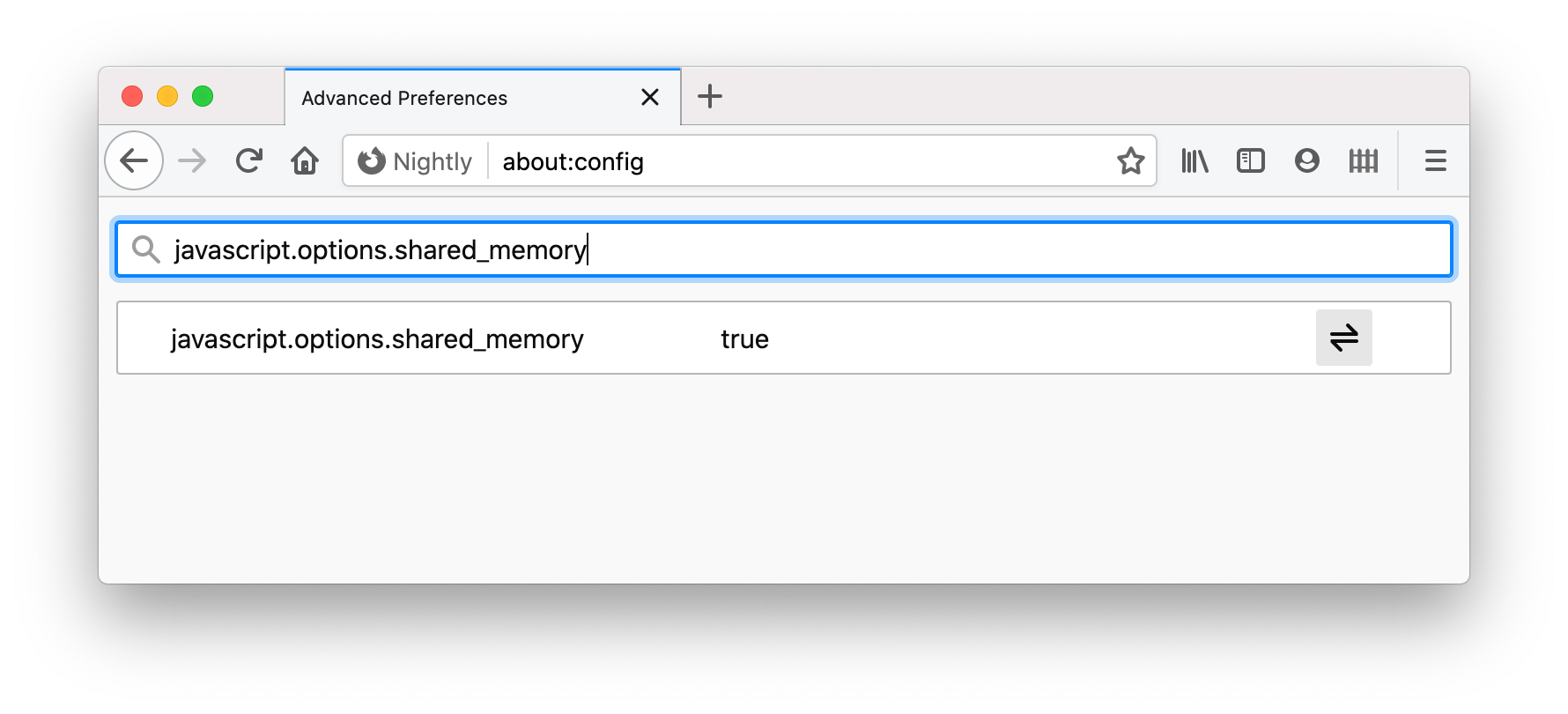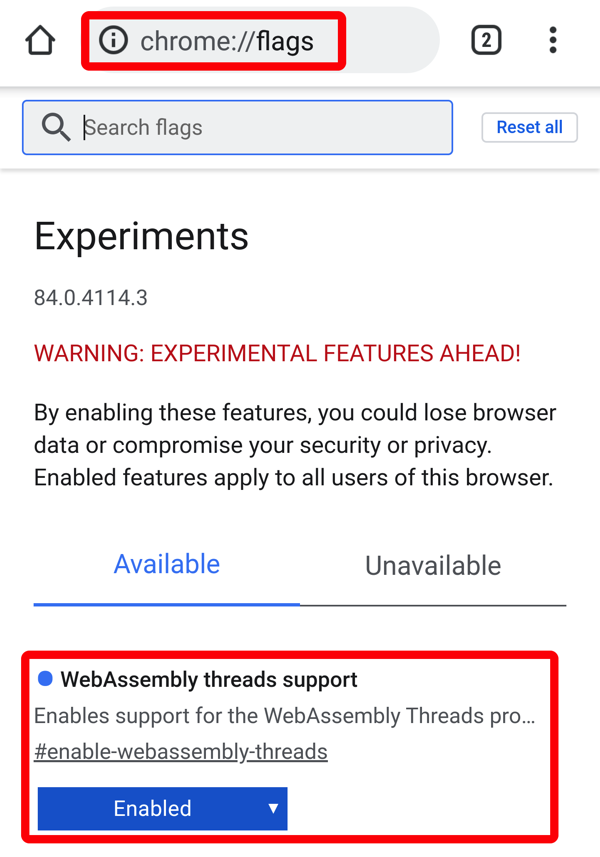The application can be accessed from https://mixedreality.mozilla.org/area-demo-service-task. Alternately, checkout the code, serve it from your webserver of choice, and load index.html in your browser.
The page is very simple, with a drop-down to select the service task, an indication of whether native WebXR is in use or the so-called "polyfill" which emulates WebXR on WebVR-only or non-XR browsers, and the last modified data of the file.
The application presents a highly-simplified service task. Choose a work from the drop-down list, and the second drop-down will display possible service tasks assigned to that worker.
The database of workers, machines, services, and assigned service tasks is drawn from a set of local json files located in the data subdirectory.
Once the page has loaded, the WebAssembly module will be loaded, and provided the user has WebXR available, the button will display either "Enter AR" or "Enter VR", depending on device capabilities. Clicking the button will enter immersive mode.
In immersive mode, the three machines will be visible around the user. If using a head-mounted device with a controller, pointing the controller will display a ray which acts as a pointer for selection and action. On handheld devices, touching the screen will have the same effect.
Each machine will display its name in a floating label above the machine, and whether it is selected for service or not. You should be able to walk up to and around the machine to inspect it.
On the assigned machine, clicking the pointer will move to the next step in the service task.
Once the required steps are complete, a new service task can be initiated by navigating back to the main page and selecting a new user/task from the drop-down menus.
The index.html file contains the page layout, as well as application settings, the WebAssembly loader, WebXR setup, and the main run loop. It is well commented, so looking through it should be instructive.
The is only one possible configuration; equally, the main run loop could have been in the WebAssembly module (as if calling main() in a C program). The choice to keep the main loop in Javascript in this application was made to assist understanding of the interaction between WebXR and OpenSceneGraph.
Native code used in the project is contained in a set of C/C++ files and libraries. These are compiled ahead-of-time to a WebAssembly module via the build.sh build script.
OpenSceneGraph (OSG) provides the core model loading and rendering in the application, the laser pointers, hit-testing, and rendering of label text and the highlight effect on the models. We use a version of OpenSceneGraph which has been pre-compiled to WebAssembly.
To connect the Javascript portion of the app to the compiled OSG WebAssembly module, we borrowed and extended a library named AROSG from the artoolkitX project. This library provides a set of C++ functions with a C wrapper to perform tasks like loading models and drawing the rays of the laser pointers. Full documentation for these interfaces can be seen in the arosg.h header file.
arosg.h- the main interfaces to the native codearosg.cpp- implements a set of functions that provide us with abstractions to OpenSceneGraph functionalityar_compat.h- a handful of macros normally found in artoolkitXar_compat.c- a handful of macros normally found in artoolkitXmtx.h- utility functions to perform OpenGL-style matrix mathmtx.c- utility functions to perform OpenGL-style matrix mathosgPlugins.h- macros to define which OpenSceneGraph plugins are to be linked statically into our applicationshaders.h- define the shaders used by our OpenSceneGraph app.
The build.sh build script compiles and links these (and from that point onwards, these native files are not required to be present on the web server). The result is contained in these files:
arosg.wasm- The compiled WebAssembly modulearosg.js- The script file loaded by the HTML page that is responsible for loading the WebAssembly module, as well as interop between Javascript and WebAssembly.arosg.worker.js- A script file loaded into worker threads in a multi-threaded WebAssembly environment.arosg.data- Contains the virtual filesystem for the WebAssembly.
WebAssembly provides a variety of different means for the native code to access files at runtime. In this application, we pre-pack files needed by the native code into a virtual file system. This step is done at compile time by passing the flag --preload-file to the wasm compiler.
The files preloaded in this way include:
models/- The 3D models used in the app, in glTF binary format (.glb).fonts/- The font(s) used by OSG to render in-scene.shaders/- Additional shaders require by OSG, in this case for the text rendering. Note that shaders we use directly are compiled intoshaders.h.
AROSG allows for the use of a text-based .dat file to specify some global transformations and settings to be applied to each model. This allows for easy scaling and positioning of models with different scales and/or origins or axes.
Positioning of the models in the experience itself is expressed separately in the file data/machines.json via OpenGL-style translation/rotation vectors.
The license file sets out the full license text.
- The HTML+JS code is licensed under the MPL2.
- The AROSG portions under the LGPLv3, and OpenSceneGraph under the OSGPL.
All of these licenses are compatible with use in a proprietary and/or commercial application.
The models of the machines are licensed for use only in association with this demonstration application. Users wishing to build on this application will need to separately license the models
| What | Minimum version | Where to download |
|---|---|---|
| Emscripten | https://emscripten.org/docs/getting_started/downloads.html | |
| OpenSceneGraph for WebAssembly | 3.7.0 | https://github.com/MozillaReality/OpenSceneGraph/releases/download/OpenSceneGraph-3.7.0-wasm%2Bmozilla-gltf/openscenegraph-3.7.0-wasm+mozilla-gltf.zip |
| bash shell | On macOS/Linux use Terminal On Windows, use Windows Subsystem for Linux, Cygwin, or git-bash. |
These commands will download and unpack the compiled OpenSceneGraph for WebAssembly package and place it in the dependencies folder inside the repository:
cd dependencies
curl -LO https://github.com/MozillaReality/OpenSceneGraph/releases/download/OpenSceneGraph-3.7.0-wasm%2Bmozilla-gltf/openscenegraph-3.7.0-wasm+mozilla-gltf.zip
unzip openscenegraph-3.7.0-wasm+mozilla-gltf.zipA convenience script build.sh allows for easy one-line compilation of the C/C++ sources and linking with OSG to form the WebAssembly module and loader code.
bash ./build.sh
To see verbose buid output, add the parameter --verbose. To do a debug build (with extra console logging and function names in debug stack backtraces) add --debug. E.g.:
bash ./build.sh --verbose --debug
Adding new users, service tasks, or assigning service tasks can be easily accomplished by modifying the json files in the data/ directory.
To add new machines, the accompanying model file will need to be added to the models directory and pre-compiled into the WebAssembly. Then the model file can be listed in the data/machines.json file. Note that each model .glb file must be accompanied by a .dat text file. Refer to one of the existing .dat files for an example of the format.
To change the rendering itself, edit arosg.h/.cpp and recompile via build.sh.
See below for areas for extension and addition.
While WebAssembly itself is supported on all WebXR-capable browsers, OpenSceneGraph assumes availability of threading and so must (at present) be built with WebAssembly's threads support enabled. Unfortunately, WebAssembly threads depends in turn on Javascript's SharedArrayBuffer type, which was disabled by default in most browsers to mitigate the "Spectre" attacks. While SharedArrayBuffer is being gradually re-enabled by default, your browser might need some help.
- At the date of writing, Firefox requires a config flag to re-enable SharedArrayBuffer. In Firefox, type
about:configin the URL bar, accept the warning, and then in the config search box typejavascript.options.shared_memory. Click the ⇌ arrows symbol so that the value changes totrueand close the config. - Firefox Reality has SharedArrayBuffer enabled by default.
- Chrome for Windows and macOS has SharedArrayBuffer enabled by default, provided "cross origin isolation" is enabled for your site. (See below for details on how to enable "cross origin isolation".
- Chrome for Android requires a config flag to re-enable SharedArrayBuffer. In Chrome, type
chrome://flagsin the URL bar, and then in the flags search box typeWebAssembly threads. Tap the pop-up and change the value from "Default" to "Enabled". - Magic Leap Helio browser does not yet support multithreaded WebAssembly (as of Leap OS 0.98.10) although Magic Leap have tentatively committed to re-enabling support in a future release.
Unsupported browsers:
- Safari for macOS/iOS does not yet support SharedArrayBuffer. On iOS, you use Mozilla's WebXR Viewer for iOS (requires WebXR Viewer version 2.0 or later).
"Cross-origin isolation" refers to server-side config that enables protection features in the browser that make re-enablement of SharedArrayBuffer possible.
If your site is served by Apache, the simplest method is to create a .htaccess file in the top-level directory of your application with these lines included:
Header set Cross-Origin-Opener-Policy: same-origin
Header set Cross-Origin-Embedder-Policy: require-corp
To serve these, you will need to ensure that your apache config also loads the "headers" module. For Apache2, check the config file (/etc/apache2/httpd.conf or similar) has the option LoadModule headers_module libexec/apache2/mod_headers.so uncommented and enabled.
At present, the JSON data files that define the users and service tasks are static files local to the server. These could be easily generated from a remote endpoint rather than being loaded from static files. The loading is in index.html at around line 106.
While the machines.json file could be generated dynamically, it refers to model files which are read by native code, so these need to be included in the filesystem accessible to WebAssembly. WebAssembly provides other filesystem implementations that allow for dynamically loading data at runtime.
he WebXR implementation does not at present render models for the device's hand controllers. The WebXR input profiles repository includes modules to allow selection and display of the appropriate 3D model for the user's controller(s). https://github.com/immersive-web/webxr-input-profiles/

